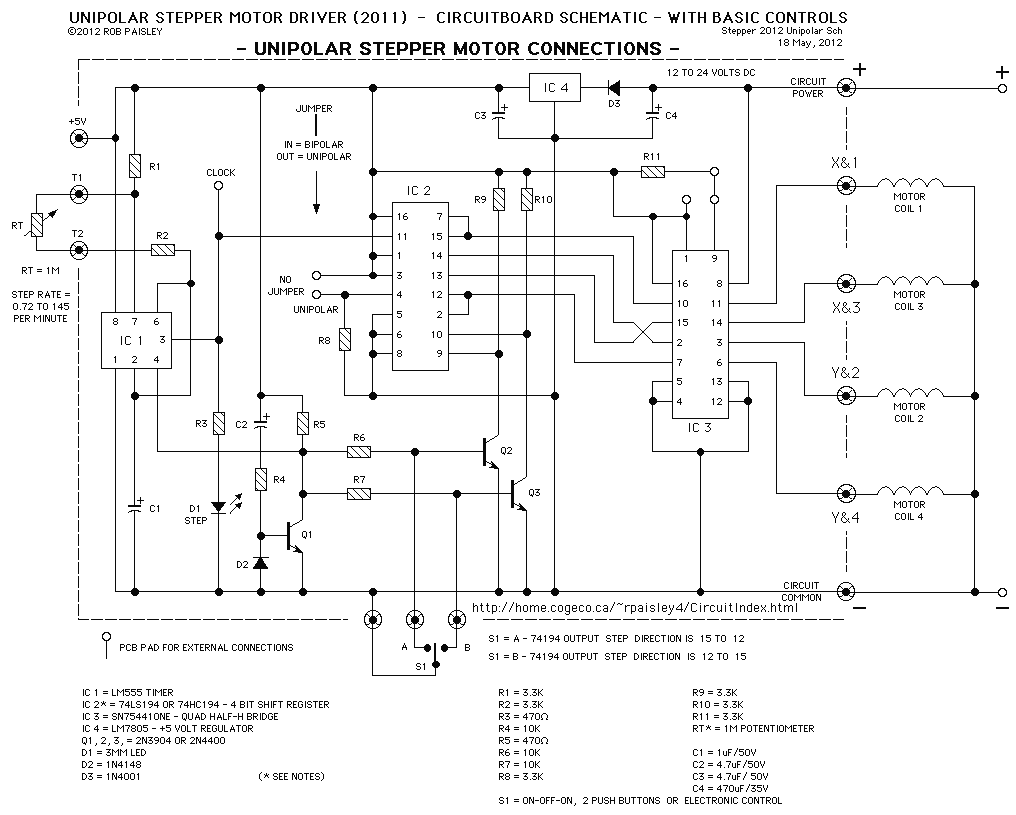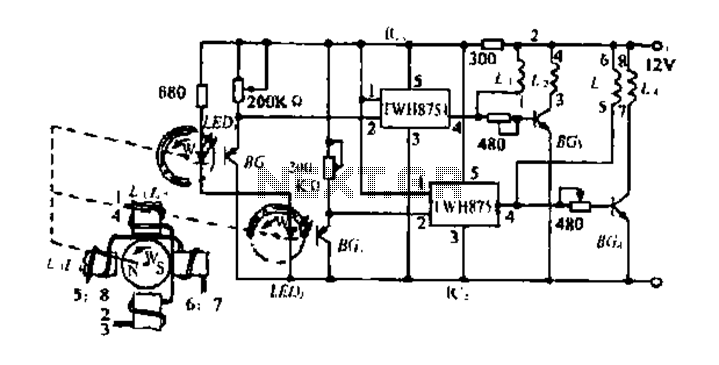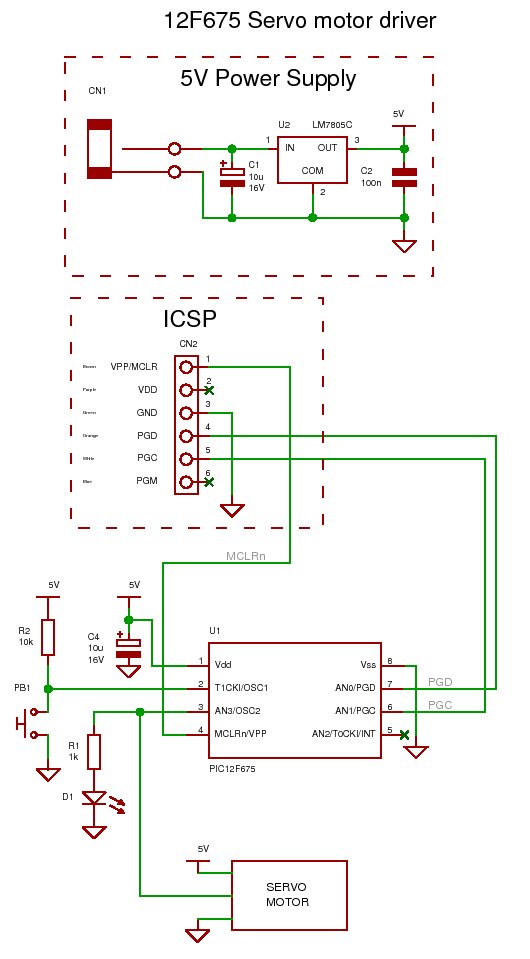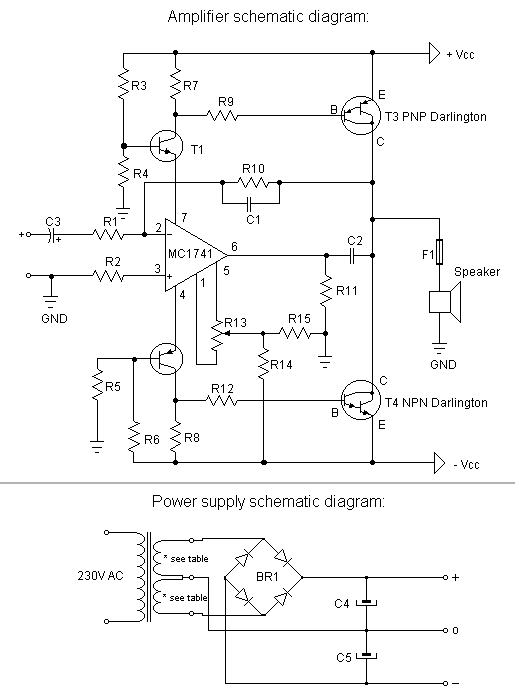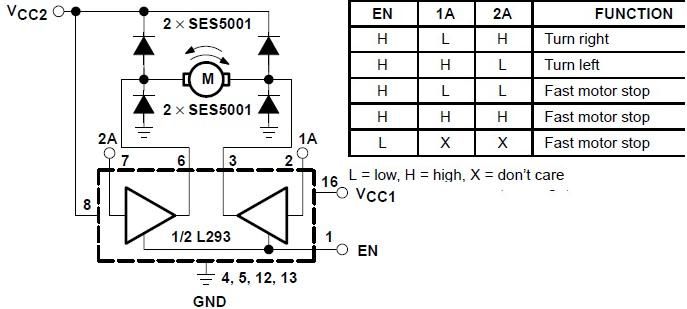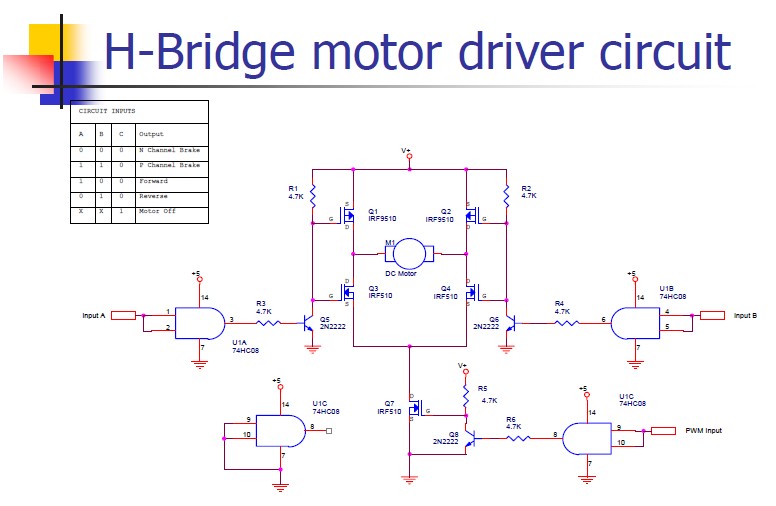
stepper motor interfacing with spartan 3an fpga
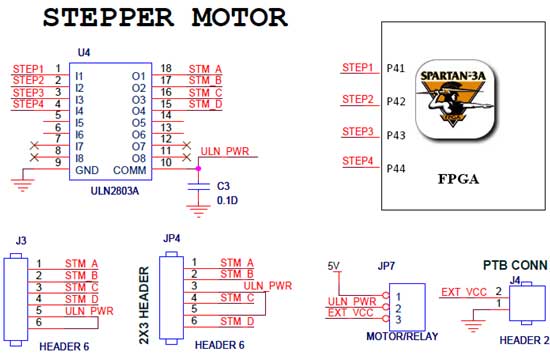
The Spartan-3an board features external interfacing for stepper motors, as illustrated in the accompanying figure. The stepper motor is driven by the ULN2803A, which is a high-voltage, high-current Darlington transistor array. The ULN2803 serves as a driver for the port I/O lines, with its outputs connected to the stepper motor. A PTB connector is available for an external power supply if required.
The Spartan-3an board is designed to facilitate the control of stepper motors through a robust interfacing mechanism. The ULN2803A is a crucial component in this setup, providing the necessary current amplification to drive the motor effectively. This Darlington transistor array consists of eight high-voltage, high-current transistors, which are configured to operate as a low-side switch. The use of Darlington pairs allows for higher current gain, making it suitable for driving inductive loads such as stepper motors.
In the schematic, the stepper motor's control lines are connected to the output pins of the ULN2803A. Each output pin corresponds to a specific phase of the stepper motor, allowing for precise control of the motor's rotation direction and step increments. The inputs of the ULN2803A are connected to the I/O ports of the Spartan-3an board, which are configured to send control signals based on the desired motor operation.
The PTB connector on the board is an important feature, as it allows for the connection of an external power supply. This is particularly useful when the stepper motor requires more current than the board can provide through its I/O ports. By connecting an external power source to the PTB connector, the ULN2803A can draw the necessary power to drive the motor without overloading the board's power supply.
In summary, the Spartan-3an board's design for stepper motor interfacing exemplifies the integration of digital control with high-current drive capabilities, enabling efficient and effective motor control in various applications.The Spartan-3an board has external stepper motor interfacing, indicated as in Figure. Stepper Motor is driven by ULN2803A. It is a high-voltage, high-current Darlington transistor array. ULN2803 is used as a driver for port I/O lines, drivers output connected to stepper motor, PTB connector provided for external power supply if needed. 🔗 External reference
The Spartan-3an board is designed to facilitate the control of stepper motors through a robust interfacing mechanism. The ULN2803A is a crucial component in this setup, providing the necessary current amplification to drive the motor effectively. This Darlington transistor array consists of eight high-voltage, high-current transistors, which are configured to operate as a low-side switch. The use of Darlington pairs allows for higher current gain, making it suitable for driving inductive loads such as stepper motors.
In the schematic, the stepper motor's control lines are connected to the output pins of the ULN2803A. Each output pin corresponds to a specific phase of the stepper motor, allowing for precise control of the motor's rotation direction and step increments. The inputs of the ULN2803A are connected to the I/O ports of the Spartan-3an board, which are configured to send control signals based on the desired motor operation.
The PTB connector on the board is an important feature, as it allows for the connection of an external power supply. This is particularly useful when the stepper motor requires more current than the board can provide through its I/O ports. By connecting an external power source to the PTB connector, the ULN2803A can draw the necessary power to drive the motor without overloading the board's power supply.
In summary, the Spartan-3an board's design for stepper motor interfacing exemplifies the integration of digital control with high-current drive capabilities, enabling efficient and effective motor control in various applications.The Spartan-3an board has external stepper motor interfacing, indicated as in Figure. Stepper Motor is driven by ULN2803A. It is a high-voltage, high-current Darlington transistor array. ULN2803 is used as a driver for port I/O lines, drivers output connected to stepper motor, PTB connector provided for external power supply if needed. 🔗 External reference
